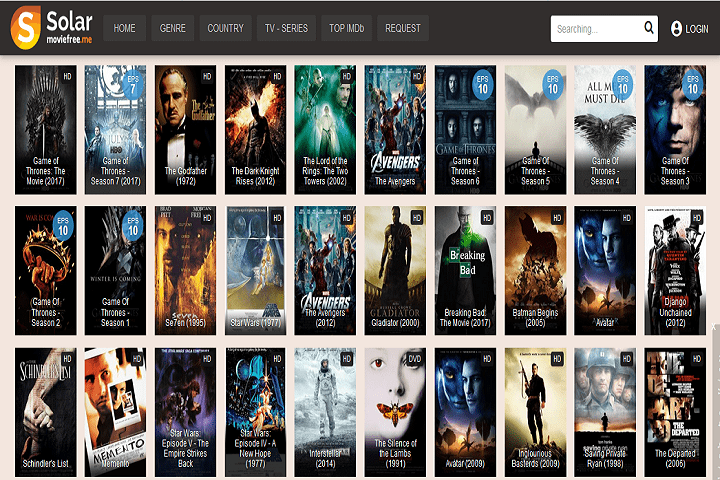Marketing
How to Organize a Classroom for Maximum Student Engagement
How to Organize a Classroom for Maximum Student Engagement, teacher’s job is to make the daily school subject interesting and involve for all of them

Teachers know how hard it can be to get all the students involved, especially if the group is big. Students come to the classroom with all kinds of interests, and yet a teacher’s job is to make the daily school subject interesting and involve for all of them. If you are new to teaching, you should be prepared to face this issue with some innovative ideas that could help you activate the students more and get closer to them. Here are five tips that could help you create a truly engaging classroom.

Table of Contents
Regularly change seating arrangements
One of the most boring aspects of school for kids is the seating arrangement. Most classrooms have a cognitive paradigm arrangement, which is organized in such a manner that the board and the teacher are turned towards the students, while all of the students are seated in multiple rows facing the teacher. This classroom arrangement calls for ex cathedra lecturing, which students find most boring and disengaging. Often changing seating arrangements can help kids surpass this feeling of monotony and have an element of surprise as they walk into the classroom.
If you’re planning a class that includes group work, cluster the tables and chairs into several smaller circles. The U-shaped classroom is a good idea for debates and discussions. Furthermore, if you want to avoid the ex-cathedra organization when you need to hold lectures, you can create a circle-shaped arrangement so that the kids can still hear and see you, but the atmosphere will feel far less tense.
Design a classroom that feels personal
Seating is only one part of the classroom interior, so you also have to think about how to engage students in using the rest of it. Most classrooms are equipped with standard school materials, but a lot of them are sharable, which makes losing them easy and the responsibility gets shared. You can solve this problem simply by creating name labels that students can put on their belongings and teach them why it’s not okay to take things that belong to somebody else.
Thanks to companies like Prime Labels, you can have your students design their very own, personal name labels. This is also a way to induce a sense of belonging in students by showing them that they have their own stuff and space in the school, which can help them see school as their second home that they enjoy spending time in.

Try the token economy
This behavioral method has been used for many decades now to encourage desirable behavior among students in the classroom. The methodology is quite simple, but it needs to be applied consistently and according to the rules in order to work efficiently. First, you need to target the desirable behavior, which can be in this case engaging in subject-related discussions during class. Every student that engages in such an activity gets a token, and tokens can be anything that you find suitable (cardboard coins, poker ships etc.).
When the agreed sum of tokens is accumulated, the students can get a reward, which also must be carefully chosen so that it motivates students to collect tokens for it. Most students would enjoy a reward such as games, longer break periods or sugar-rush food. Finally, keep in mind that this economy cannot last for long, because eventually children will get bored if they have to work too much for the reward. You can make several smaller rewards for fewer tokens and offer a more diverse choice of rewards so that everyone can find something worth collecting tokens for.
Don’t guess – ask the students
Teachers easily forget that students have their opinions which they spread among themselves, but rarely share with them. This is why teachers are often surprised when parents come complaining due to their children being unsatisfied. Although they might not give you reasonable and straight-forward answer, there is no reason why you shouldn’t ask the students about what they think the class should be like and try to implement at least some of their ideas.
This is a great way to involve children in class-related decision-making and help them see what it feels like to be responsible for the whole class.
Regularly self-evaluating your work with students will also help you rise up as a teacher that cares for the students’ needs. Sometimes it can be really hard to understand what those needs are and how to meet them, but every minute you spend on learning how to improve your classes will help you not only become a better teacher, but also a better version of yourself.
Business
Navigating the Process of Selling Deceased Estate Shares
This article aims to provide a comprehensive guide to selling shares from a deceased estate. Process of Selling Deceased Estate Shares.

Table of Contents
1. Understanding the Basics of Selling Deceased Estate Shares
Dealing with a deceased estate can be a challenging and emotional process, especially when it comes to handling financial assets like shares. This article aims to provide a comprehensive guide to selling shares from a deceased estate.
2. What are Deceased Estate Shares?
Deceased estate shares refer to the stocks and shares that were owned by an individual who has passed away. These shares become part of the deceased’s estate and are subject to the terms of their will or estate plan.
3. The Importance of Valuing the Shares
The first step in selling deceased estate shares is to obtain a current valuation. This valuation is crucial for several reasons: it helps in distributing the estate among beneficiaries, it may be necessary for tax purposes, and it gives an idea of the market value of the shares.
4. Legal Requirements and Executor Responsibilities
The executor of the estate plays a pivotal role in the management and distribution of the deceased’s assets. This section will cover the legal responsibilities and steps the executor needs to take to lawfully sell the shares.
5. Obtaining Probate
Before any action can be taken with the shares, it’s often necessary to obtain probate. Probate is a legal process that confirms the executor’s authority to deal with the deceased’s assets.
Transferring Shares into the Executor’s Name
Once probate is granted, shares may need to be transferred into the name of the executor. This process varies depending on the company and the type of shares.
6. The Process of Selling Shares
After completing legal formalities, the executor can proceed with selling the shares. This section will outline the steps involved in this process, including choosing a brokerage or financial service, understanding market conditions, and making informed decisions.
Deciding on the Right Time to Sell
Timing can significantly impact the returns from selling shares. Executors need to consider market conditions and financial advice to determine the best time to sell.
Completing the Sale
This subsection will detail the actual process of selling shares, including placing orders, handling transaction fees, and ensuring all regulatory requirements are met.

7. Navigating Tax Implications and Reporting
Managing tax obligations is a critical aspect of selling deceased estate shares. This section will explain the potential tax implications and the importance of accurate reporting for both capital gains tax and inheritance tax considerations.
Understanding Capital Gains Tax Responsibilities
When shares are sold, any profit made from the time of the deceased’s passing to the sale date may be subject to capital gains tax. Executors need to be aware of these implications and plan accordingly.
Inheritance Tax Considerations
In some jurisdictions, the value of the deceased estate’s shares might impact inheritance tax calculations. It’s essential for executors to understand these aspects in order to ensure compliance with tax laws.
8. Common Challenges and How to Overcome Them
Selling deceased estate shares can present unique challenges. This section will discuss common issues such as disputed wills, fragmented information about the shares, and market volatility.
Dealing with Disputed Wills and Beneficiary Disagreements
Disputes over the will or disagreements among beneficiaries can complicate the process. Executors must handle these situations delicately and legally.
Managing Market Volatility
Shares can be subject to market fluctuations. Executors should be prepared for this volatility and may need to consult financial advisors to navigate these waters effectively.
9. Tips for Executors Handling Deceased Estate Shares
This section will provide practical advice for executors, including the importance of seeking professional advice, keeping thorough records, and communicating clearly with beneficiaries.
Seeking Professional Financial and Legal Advice
The complexity of selling shares from a deceased estate often necessitates professional advice. This can range from legal counsel to financial advisory services.
Record Keeping and Communication with Beneficiaries
Maintaining transparent and thorough records is crucial. Executors should also prioritize clear and consistent communication with all beneficiaries to avoid misunderstandings.
Conclusion
Selling shares from a deceased estate is a responsibility that requires careful attention to legal, financial, and interpersonal dynamics. By understanding the process, staying informed about tax obligations, and tackling challenges head-on, executors can fulfill their duties effectively and respectfully.
-

 Instagram4 years ago
Instagram4 years agoBuy IG likes and buy organic Instagram followers: where to buy them and how?
-

 Instagram4 years ago
Instagram4 years ago100% Genuine Instagram Followers & Likes with Guaranteed Tool
-

 Business5 years ago
Business5 years ago7 Must Have Digital Marketing Tools For Your Small Businesses
-

 Instagram4 years ago
Instagram4 years agoInstagram Followers And Likes – Online Social Media Platform
















